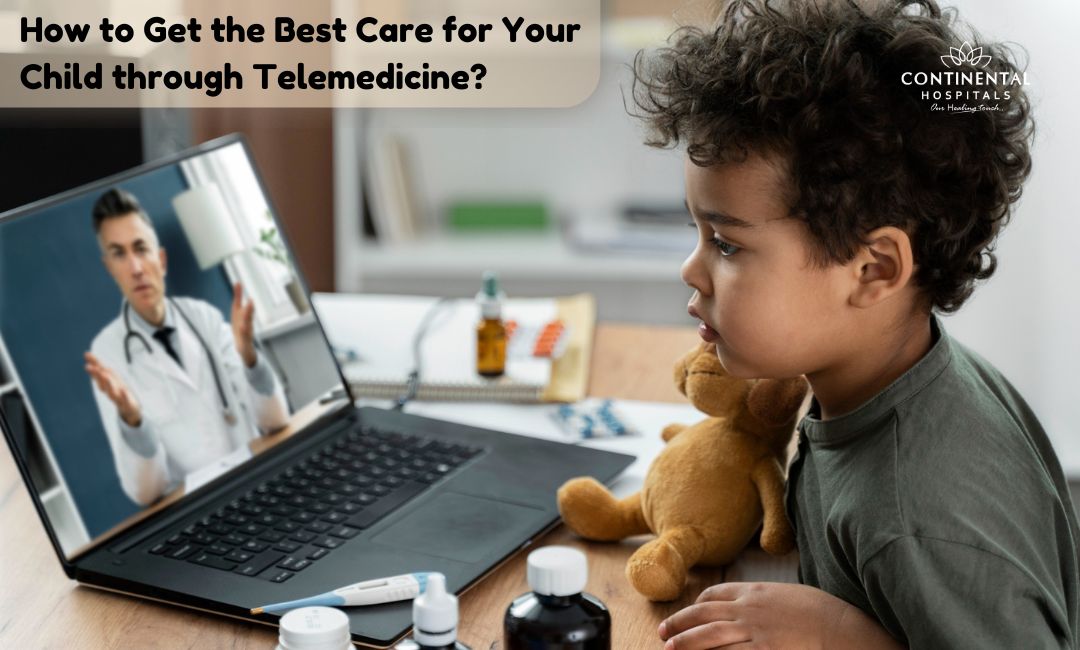As a parent, ensuring your child’s health is a top priority. But getting timely medical care can sometimes be challenging, especially when juggling busy schedules or living far from a healthcare facility. This is where telemedicine becomes a game-changer. Telemedicine allows you to access medical advice and care for your child from the comfort of your home. It's quick, convenient, and can provide peace of mind when your child needs attention but a visit to the doctor seems impractical.
In this blog, we’ll walk you through how telemedicine can offer the best care for your child and some tips on how to make the most of it.
What Is Telemedicine?
Telemedicine involves using technology to consult with healthcare providers remotely. Through video calls, phone calls, or online chat, telemedicine allows doctors to diagnose, treat, and monitor patients without the need for an in-person visit.
For children, telemedicine has become especially useful. Whether it’s a quick check-up, advice for a minor illness, or even follow-up care after a hospital visit, telemedicine allows you to meet with your child's pediatrician without the hassle of travelling.
Why Telemedicine Works Well for Children
Children often require prompt medical care for illnesses and injuries, and telemedicine allows you to address their needs more efficiently. Here are some reasons why telemedicine can be a great option for your child’s healthcare:
Convenience: You no longer need to take time off work or pull your child out of school for minor health issues. With telemedicine, you can schedule appointments that fit your family’s routine.
Quick Access: Whether your child has a sudden rash or an unexplained fever, telemedicine gives you access to care quickly. You won’t have to wait in long lines at the doctor’s office, which is especially helpful for urgent but non-emergency situations.
Comfortable for Children: Many children feel anxious in unfamiliar environments, like doctor’s offices. Telemedicine allows them to stay in the comfort of their own home, making the experience less intimidating.
Continuity of Care: Telemedicine also offers follow-up care without additional trips to the clinic. For children with chronic conditions, it ensures ongoing care without disrupting their routine.
Common Pediatric Conditions Managed with Telemedicine
Telemedicine isn’t just for adults—it can address a wide range of pediatric conditions. Some common health issues that can be managed through telemedicine include:
Cold, Flu, and Fever: These are some of the most common reasons parents reach out to doctors. Telemedicine allows healthcare providers to assess symptoms, offer treatment recommendations, and prescribe medications if necessary.
Skin Rashes and Allergies: You can share pictures of rashes or skin irritations with your child’s doctor during the consultation for a diagnosis and treatment advice.
Ear Infections: Ear infections are common in children, and while a physical exam may be ideal, telemedicine can be used to assess the symptoms and recommend next steps.
Stomach Issues: Issues like diarrhea, vomiting, or constipation can be assessed through telemedicine, and your child’s doctor can suggest remedies or recommend further testing if needed.
Behavioral and Mental Health Consultations: If your child is experiencing anxiety, sleep issues, or behavioral concerns, telemedicine can connect you with mental health professionals who specialize in pediatrics.
How to Prepare for a Telemedicine Appointment
To ensure a smooth telemedicine experience, preparation is key. Here are some tips on how to get ready for your child’s virtual consultation:
Choose a Quiet, Well-Lit Space: Find a quiet and well-lit area for the appointment where you and your child can communicate clearly with the doctor. Make sure your internet connection is stable to avoid disruptions.
Prepare Your Child: Explain to your child what will happen during the telemedicine visit. Let them know they will be talking to a doctor on the screen, and encourage them to share how they feel.
Have Medical Information Ready: Be prepared with your child’s medical history, a list of symptoms, and any relevant details the doctor might need. If your child is taking medications, have those on hand for reference.
Take Pictures of Symptoms: If your child has visible symptoms like a rash or swelling, it’s helpful to take clear pictures before the appointment. These images can provide valuable information for the doctor during the consultation.
List Your Concerns: Write down any questions or concerns you have before the appointment. This helps you make the most of the time with the doctor and ensures nothing important is overlooked.
Building a Relationship with Your Child’s Telemedicine Doctor
One of the concerns some parents have with telemedicine is the lack of face-to-face interaction. However, it’s still possible to build a strong and trusting relationship with your child’s doctor through virtual care. Here’s how:
Consistent Appointments: Regularly using telemedicine for follow-up appointments can help your child’s doctor become familiar with your child’s health history and needs.
Clear Communication: Always communicate openly about your child’s symptoms, medical history, and any concerns. The more information you provide, the better the doctor can care for your child.
Use the Same Provider: When possible, try to stick with the same healthcare provider for your child’s telemedicine appointments. This continuity helps build trust and ensures better care as the provider will be familiar with your child’s health needs.
Limitations of Telemedicine for Pediatric Care
While telemedicine offers many advantages, there are certain limitations to be aware of:
Physical Examinations: Some conditions require hands-on exams, such as listening to the heart or lungs, or checking for certain physical abnormalities. In such cases, an in-person visit might still be necessary.
Specialized Testing: Telemedicine cannot replace certain diagnostic tests, such as blood tests or imaging, which may require a visit to a lab or clinic.
Emergency Situations: Telemedicine is not suitable for life-threatening or emergencies. In these cases, it's important to visit the nearest emergency room or urgent care center immediately.
Making Telemedicine Part of Your Child’s Healthcare Routine
Telemedicine can be a valuable part of your child’s healthcare routine when used appropriately. Here are some steps to integrate telemedicine into your child’s regular healthcare:
Establish a Primary Care Provider (PCP): Ensure you have a dedicated pediatrician who is available for both in-person and telemedicine visits. This allows for a seamless transition between virtual and physical care as needed.
Understand Your Insurance Coverage: Check with your health insurance provider to understand the coverage for telemedicine services. Many insurers offer full or partial coverage for virtual appointments.
Use Telemedicine for Follow-Ups: Once your child’s initial issue is diagnosed and treated, consider using telemedicine for follow-up care, reducing the need for additional in-person visits.
Conclusion
Telemedicine is a powerful tool that makes healthcare more accessible, especially for busy parents. By using telemedicine effectively, you can ensure that your child receives timely and appropriate care without the added stress of scheduling and travel. With the right preparation and approach, telemedicine can be a trusted partner in keeping your child healthy and happy.
Related Blogs:
.webp)














